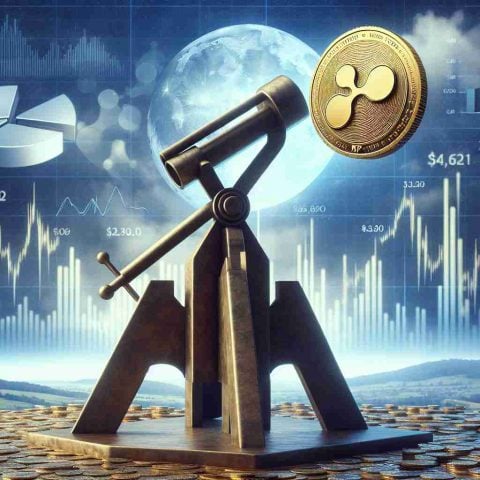Renowned macroeconomic analyst and Real Vision CEO, Raoul Pal, has shared his insights on the future of gold and cryptocurrency investments. While he anticipates a potential rise in gold prices, he suggests the growth of gold will be modest compared to the remarkable prospects of cryptocurrencies.
Pal’s analysis, featured in a recent report, points out that currency depreciation is a fundamental driver for the price increase in both gold and cryptocurrencies. He highlights the massive national debt of the United States and the consequential interest obligations as pivotal reasons for continued currency devaluation.
In his view, currency devaluation is an enduring phenomenon, with interest payments necessary for debt servicing acting as a catalyst for gold price increases. However, he notes that cryptocurrencies offer significantly higher returns compared to gold. While gold remains a sound investment, he believes cryptocurrencies are more appealing due to their high beta and superior risk-adjusted returns.
Additionally, Pal argues that consistent currency devaluation could prevent economic recessions. He asserts that recessions typically stem from credit events, which occur when collateral values drop significantly compared to debt levels. By depreciating currency, the collateral retains its value, reducing recession risks. He emphasizes that, aside from the pandemic-induced downturn in 2020, no recession would have occurred.
Ultimately, while gold stands as a reliable asset, the significant growth potential and returns associated with cryptocurrencies make them a more attractive choice for investors. These insights continue to captivate investors curious about the future roles of gold and cryptocurrencies in the market landscape.
What the Future Holds: Debunking Myths and Exploring the Implications of Currency Devaluation on Investments
A Fresh Perspective on Currency Devaluation
In an era characterized by financial uncertainty and rapid innovation, understanding the dynamics of currency devaluation is crucial. Raoul Pal’s insights into the interplay between national debt and currency depreciation shed light on the potential future of investments, particularly gold and cryptocurrencies. While many grasp the elementary connection between currency devaluation and asset prices, it is important to explore what this means for everyday lives, communities, and national economies.
Economic Implications and Community Impact
At a societal level, consistent currency devaluation can lead to increased cost of living as prices of goods and services rise. This is especially impactful for communities with fixed or low incomes. Countries with high national debt may face challenges managing their fiscal policies, potentially leading to increased taxes or reduced public services, affecting the quality of life in these communities.
Yet, there is an argument that moderate currency devaluation can stimulate economic activity by making exports cheaper and more competitive. This can drive demand, potentially resulting in job creation and economic growth. However, this potential advantage must be weighed against the risk of inflation, which can erode purchasing power, affecting those with lower financial resilience the most.
Advantages of Investing in Cryptocurrencies
Cryptocurrencies offer diversification in investment portfolios with higher potential returns. Their decentralized nature provides an alternative to traditional currencies, enticing nations and communities seeking to bypass the influence of a particular country’s monetary policy. This can be particularly advantageous for regions experiencing hyperinflation or political instability.
Moreover, the technology behind cryptocurrencies, blockchain, is fostering innovation across various sectors, from finance to healthcare, by ensuring transparency and reducing costs. Communities investing in these technologies could harness economic and social benefits, driving growth and modernization.
Controversies and Challenges
Despite the promise of cryptocurrencies, they invite a set of controversies. Primarily, the volatility associated with these digital currencies is a significant risk for investors, albeit with the potential for high returns. This volatility also raises questions about their viability as a stable currency solution for everyday transactions.
The environmental impact of certain cryptocurrencies, particularly those requiring intensive computational power for mining, is another issue hampering their adoption. Communities aware of eco-friendly concerns may resist embracing such currencies without sustainable solutions.
Exploring Critical Questions
– How can communities protect themselves against the adverse effects of currency devaluation? Diversifying assets and investing in a mix of secure and high-growth potential investments like gold and cryptocurrencies can help communities hedge against inflation and currency devaluation.
– Can cryptocurrencies fully replace traditional financial systems? While cryptocurrencies present numerous advantages, their widespread adoption is hindered by regulatory challenges, technological barriers, and general public skepticism. Their future as a complement to traditional systems, rather than a replacement, seems more probable.
A Balancing Act: Final Thoughts
The decision to invest in gold, cryptocurrencies, or a combination of both is not merely a financial consideration. It involves understanding and reacting to broader economic dynamics. As more investors and communities engage with these insights, an informed approach can drive long-term stability and growth in response to continuous currency devaluation.
For more information on currency and investment trends, you can visit Bloomberg, a trusted resource for financial news and analysis.














